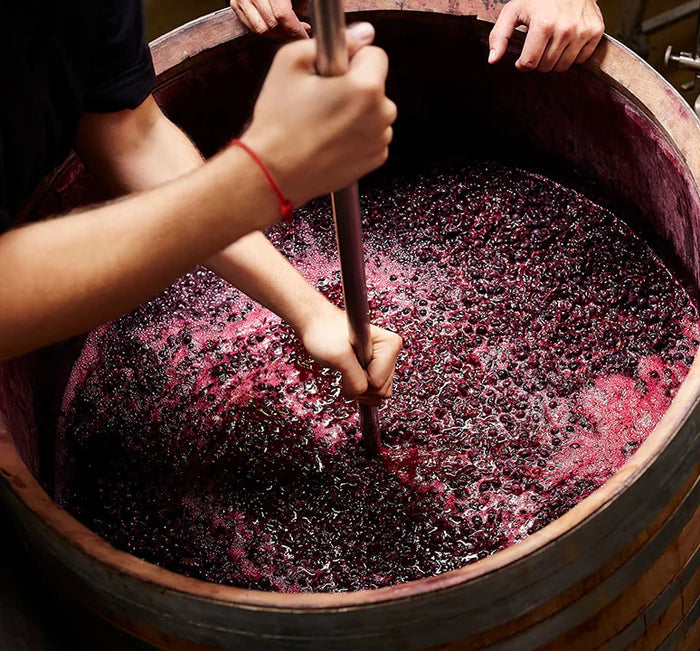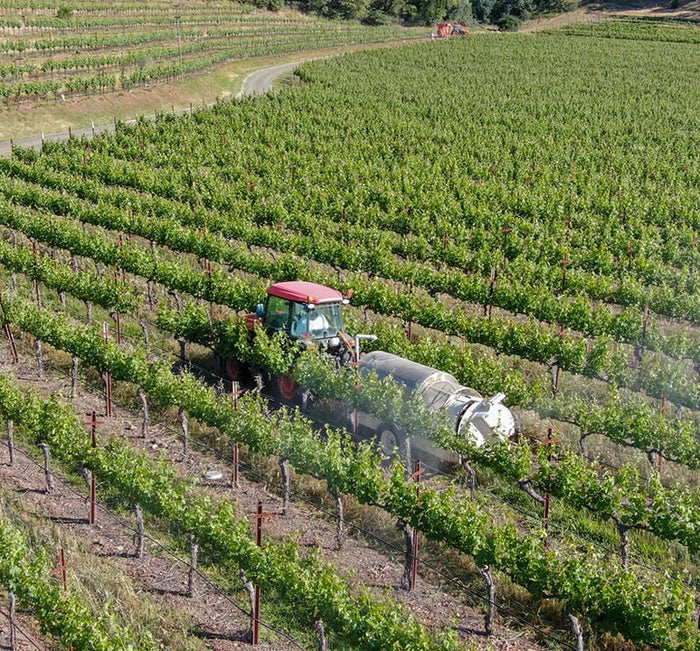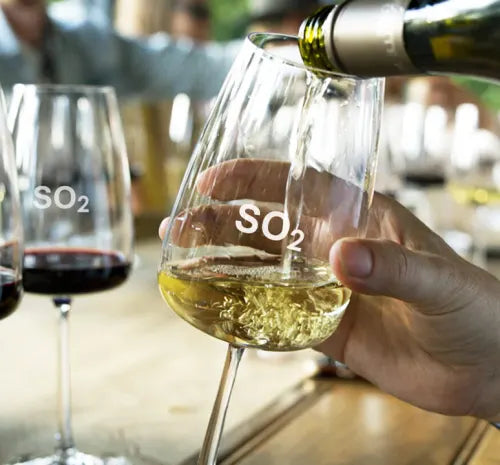
USING NATURAL OR CULTURED YEAST?
YEAST & HOW IT AFFECTS WINE QUALITY
Read Time: 3 Mins
The yeast strains that the winemakers use are rarely if ever discussed, even though they are crucial to how the wine tastes. In simple terms, yeast is responsible for the fermentation process that changes grape juice into wine. Straight after pressing the juice is put into fermenters, at this stage we have vats of grape juice that often only has minor similarity to the wine it will produce.
It is the microbiological reaction between yeast and the juice that turns the juice into wine with its intricate flavours. The topic on yeast and winemaking is extremely complicated, and I am only going to touch on a few of what I see as the main issues with the type of yeast.
THE DELICATE WINE FERMENTATION PROCESS
Historically, grapes were harvested, pressed, and then the fermentation process was started by yeasts that occurred naturally in the vineyard and the winery. In recent years, especially with "new world" winemakers, the use of cultured and genetically modified yeast has become popular.
USING WILD AND MODIFIED YEASTS
Wild yeasts which are individual to their location and the winery occur naturally. Cultured yeasts are traditionally made from "local" yeasts and became popular for wine makers to ensure that their fermentation started correctly. Genetically modified yeasts may have nothing in common with the local regionality, but the winemaker can buy the type that will produce their required flavour profile.
Modified yeast has become very popular in new world wine-making as they will stand higher alcohol content fermentation, and with them the winemaker can produce the "perfect" flavour profile and use them to assist in countering poor grape quality.
NATURAL YEAST CAN HELP YOU TASTE THE TRUE TERROIR
So which one is best? This is one of the modern winemaking dilemmas, and there are famous winemakers in both camps. Natural winemakers / small family wineries using the wild yeast ferment claiming the traditional way is more indicative of terroir. The larger wineries will generally always use modified /cultured yeasts as this will ensure consistency of flavour across their production.
THE ARGUMENT FOR CULTURED YEASTS
Also with larger volumes comes more risk in leaving the fermentation in the hands of potentially unknown yeast strains. There are 3 main reasons for using cultured yeast:
- Cultures yeasts are sturdier and easier to work with. The wine maker knows that there is enough yeast to get to process happening and the flavour profile that they will achieve. They run less to no risk of the fermentation process being slow to get going which can lead to a situation where bacterial spoilage is possible. In this instance, a bacteria such as Brettanomyces may drive the process producing a flawed wine.
- Cultured yeasts will withstand higher alcohol levels than wild yeast. Due to a number of reasons, the alcohol level in some wine has been increasing.
- By only using wild yeasts, there is a risk that the indigenous yeasts are not ideal and the winemaker can lose a bit of control over the fermentation process and therefore control over the flavours of the final product. With the growth of contract winemakers and large corporate producers, this is also an important commercial consideration.
By eliminating any natural yeasts and bacteria and only adding the preferred yeast, a winemaker can control the final flavours that they desire, eg certain grape types and selected yeasts will produce a particular flavour profile. The ability to effectively buy your flavour profile is a great benefit if you are growing grapes in an area that produces substandard grapes, or you are looking at producing greater volumes of wine that requires standardisation.
SO WHY DO SOME WINEMAKERS ADVOCATE FOR WILD YEASTS?
- For some, especially natural winemakers, it is a philosophical argument. Using wild yeasts is a truer representation of the vineyard. If you are truly wanting to represent the terroir, then you need to use the yeasts from it.
- By not adding any additional yeast, there will be a slower and cooler start to fermentation. This slower fermentation often results in a final wine that is richer and will have more complexity.
- Using wild yeast is the start of making wine that has not been "chemically brewed" in the winery. This is the traditional method and was used well before genetically modified yeasts where available.
While both methods are able to produce quality product, to our producers this is yet another step in the process whereby they can eliminate manufactured chemicals from their wine making. Our producers generally use wild yeasts topped up with cultured local yeast, thereby, ensuring fermentation starts correctly.
The modern method of using genetically modified yeast, requires the use of sulphur at the time of harvest to kill any naturally occurring yeasts and bacteria, this helps to sterilise the grapes and allows the controlled addition of the required yeasts.
Winemakers that I am talking to tell me that as they have progressed down the organic journey in their vineyards that the amount of cultured yeast that they need to use is decreasing each year as the natural ecosystems in the vineyard rejuvenate and the levels of wild yeasts gradually increase, so interestingly as less synthetic chemicals are placed in the vineyard, less cultured yeast is required.
As I said at the onset, this is a very complex topic and once again, there is no right or wrong, but I hope that this can help you make a more informed choice of type and style of wine that you consume.
Healthy drinking...


